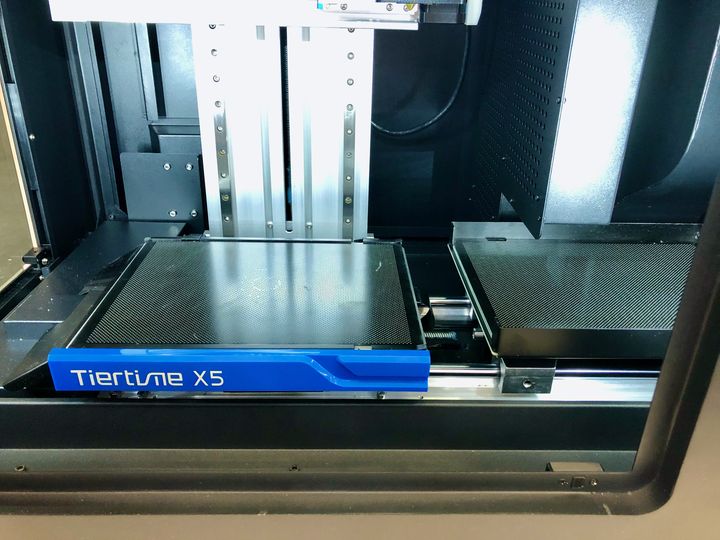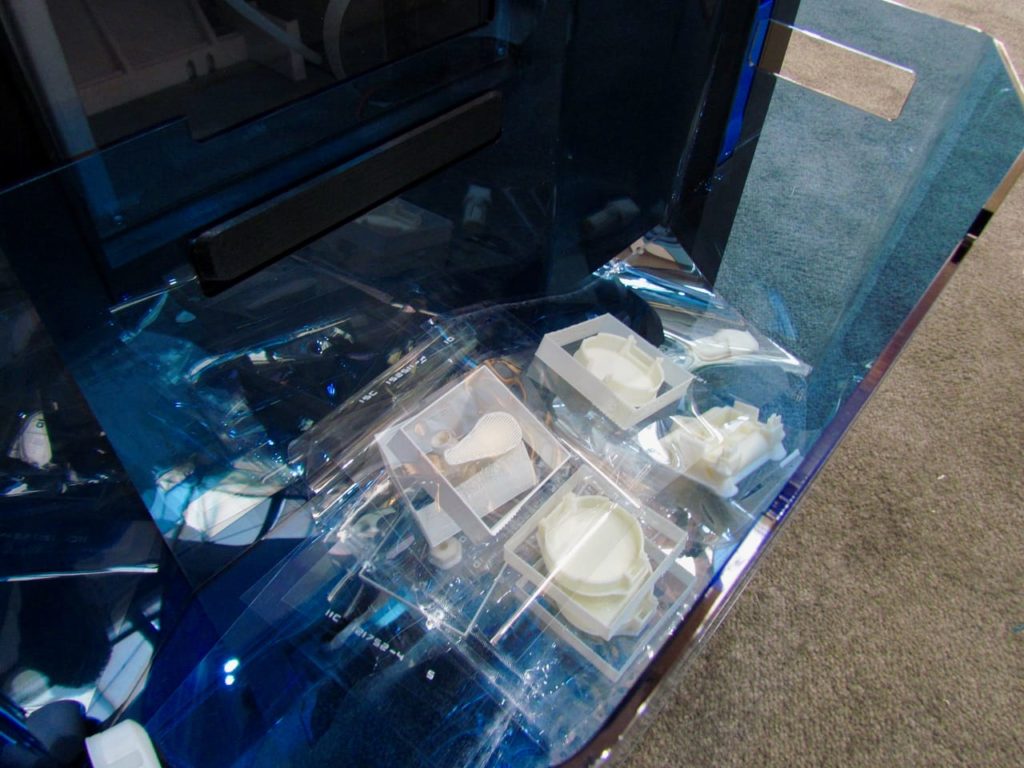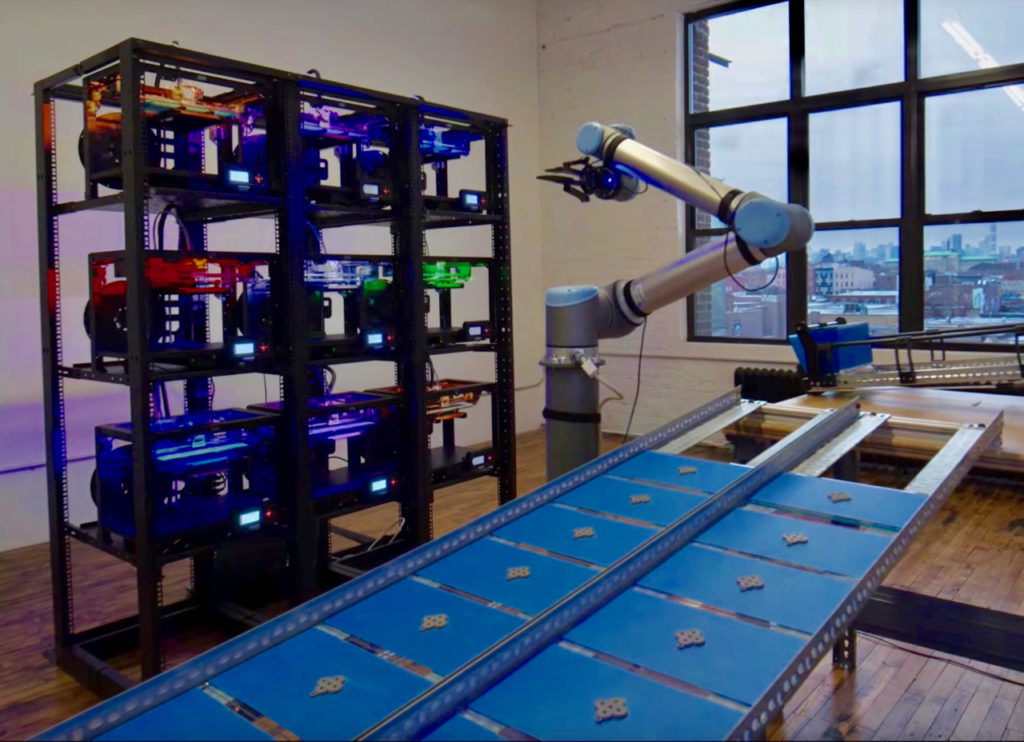
A major barrier to 3D printing adoption has long been automation, but what is the best way to achieve it?
Unlike many typical manufacturing machines, 3D printers are almost without exception built today as standalone devices. They start, finish and then wait for someone to handle the completed 3D prints so they can get on with the next job.
This is quite unfortunate, as such an animal really doesn’t fit at all into today’s factories. An industry observer told me once they were the “easy-bake ovens” of manufacturing, a very appropriate analogy. Meanwhile, sophisticated factory manufacturing systems streamline a highly-engineered flow of raw material through to piles of output.
There have been some attempts at integrating 3D printing directly into manufacturing through the use of digital data integrations, but that doesn’t really solve the automation problem.
This is a fundamental limitation of 3D printers.
However, there have been attempts to overcome this barrier, and they take on two forms.
3D Print Removal
One form is to redesign the printer to automatically eject the completed prints using a variety of approaches. I’ve seen systems that eject print plates and automatically insert new ones; I’ve seen print plates that have pins that rise to push off prints; I’ve seen systems that use thermal changes to release 3D prints; I’ve seen systems that melt material to release prints; I’ve seen GCODE that hammers the toolhead into the print to knock if off the plate into a bucket.

But perhaps the most successful approach to “continuous” 3D printing is with a conveyor belt. This has been attempted various times by several vendors, including the Stratasys Continuous Demonstrator, the MakerBot Automated Build Plate and most recently the iFactory, RobotFactory and Creality 3DPrintMill systems, which are low-cost methods of continuous 3D printing.
That’s one approach. But the other is a bit more brute force: don’t automate the machine; automate the human!
Robotic 3D Printer Automation
In this approach a robotic system of some kind is used to replace the human activity associated with manual operations. This usually means removing completed print plates and moving them to a post-processing station.
Early attempts at this concept simply employed programmable robotic arms repurposed into a 3D printing workshop. With standardized print plates and machines, it was possible to have a robot arm move things around to keep 3D printing going through the night.
One example of that method was attempted by NY-based Voodoo Manufacturing, as seen here. At one point they had 160 low-cost desktop 3D printers in their “farm” being handled by robot arms.

However, their “Project Skywalker” ultimately failed, and Voodoo Manufacturing closed. Their final statement suggests they were a victim of COVID-19, but there’s likely more to the story.
My suspicion is that the robotic approach is too expensive. Robotic arms are general purpose machines that can be used in high-efficiency manufacturing lines for great profit; or they can be used to occasionally move 3D printer plates around. I have a suspicion that their utility was never really economical because they would not have been in use for a majority of the time: the few dozen 3D printers in reach would require attention only once in a while. Low usage rates mean low investment efficiency, too.
Possibly because of Voodoo Manufacturing’s experiment we haven’t seen many robotic approaches since that time. Instead we’ve seen several attempts at custom-designed array systems, such as those from Triditive, Formlabs and of course the Figure 4 from 3D Systems.
These systems are clearly more economical to build and operate than general purpose robotic arms, and that better matches the throughput of typical 3D printers involved.
This is why I find it puzzling to hear that Atlanta-based service bureau 3D Printing Tech announced they’ve ”purchased critical assets of Voodoo Manufacturing”, apparently with intention of putting it to work in their operations.
3D Printing Tech said:
“Over the past five years, 3D Printing Tech has grown to operate one of the largest selective laser sintering (SLS) printing farms in the South. This acquisition is also an important step toward operating one of the largest fused deposition modeling (FDM) print farms in the U.S.”
It sounds like they intend on using the robotic tech from Voodoo Manufacturing to automate their FFF systems. They don’t explain what type of systems they use, but you can be sure this would require plenty of custom robotic coding to match the equipment’s needs, and then to simplify things they’d need to have a large farm of identical equipment so that the robotic code and processes would work efficiently over the entire farm. Either that or write new code for each type of equipment in use.
Does 3D Printing Tech have some new way of using the robotic equipment from Voodoo Manufacturing that we don’t know about? I ask that question because they could suffer the same fate as Voodoo Manufacturing if they are in the same scenario. Perhaps 3D Printing Tech has a way to use robotic gear more efficiently, or it may be as simple as the purchase price was low enough to make it worthwhile even with inefficiencies.
Either way, it should be interesting to see how 3D Printing Tech proceeds with the new equipment.
Via 3D Printing Tech
